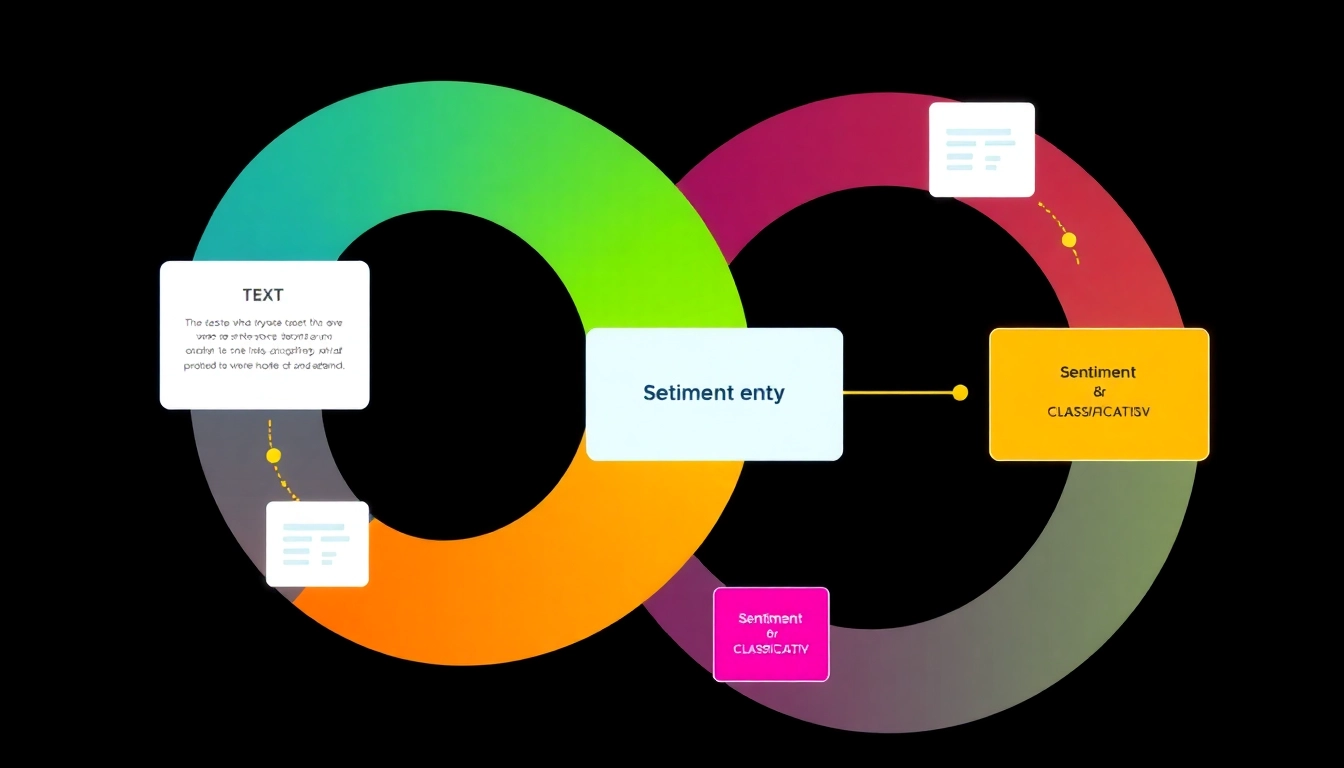Understanding Agentic Human AI
Definition and Key Features of Agentic AI
Agentic Human AI refers to advanced artificial intelligence systems designed to perform tasks and make decisions with a significant level of autonomy. Unlike traditional AI, which often operates within restricted parameters and requires constant human supervision, agentic AI can set its own goals and take independent actions to achieve them. These systems leverage machine learning, natural language processing, and advanced algorithms to mimic cognitive functions like reasoning and problem-solving, making them capable of handling complex tasks across various domains.
Key features of agentic AI include:
- Autonomy: The ability to operate without human intervention, allowing for real-time decision-making.
- Context Awareness: Understanding and integrating contextual information to improve decision outcomes.
- Learning and Adaptation: Continuously learning from past experiences and adjusting strategies based on new data.
- Goal-Directed Behavior: Pursuing specific objectives independently, which can enhance efficiency and effectiveness.
By understanding these features, businesses can better appreciate the transformative potential of Agentic Human AI in various industries.
How Agentic AI Differs from Traditional AI
The primary distinction between agentic AI and traditional AI lies in the level of autonomy and adaptability. Traditional AI systems usually operate within defined parameters and execute pre-programmed responses to specific inputs. These systems often lack the ability to learn outside their programmed framework, and their decision-making processes typically require human oversight.
In contrast, agentic AI operates with a higher degree of flexibility. It can:
- Analyze large datasets in real time without human input.
- Make predictions and decisions based on patterns discerned from past behavior.
- Engage in multi-faceted problem-solving that often involves collaboration with other AI agents.
- Adapt to dynamic environments, adjusting its operations as situations change.
These differences make agentic AI particularly suited for complex applications in fields such as healthcare, finance, logistics, and customer service, where nuanced understanding and adaptive responses are crucial for success.
The Role of Autonomy in Agentic Human AI Systems
Autonomy is a defining characteristic of agentic human AI and serves as the backbone of its functionality. This quality enables AI systems to act independently in a variety of contexts, leading to significant improvements in operational efficiency and effectiveness.
Autonomy allows agentic AI to handle tasks ranging from data analysis to customer interaction without waiting for human input. For example, in a customer service setting, an agentic AI system can address common inquiries, provide tailored recommendations based on customer history, and even initiate follow-up actions without needing explicit commands. This reduces response time and enhances the customer experience.
Furthermore, autonomous AI systems can respond to issues in real-time, which is particularly beneficial for industries such as manufacturing and logistics, where rapid decision-making is essential for maintaining operational flow and mitigating risks.
Applications of Agentic Human AI
Transforming Workplaces with Agentic AI
The rise of agentic AI is reshaping workplace dynamics. With the ability to operate autonomously, these AI systems can streamline processes, enhance productivity, and support workforce augmentation.
In sectors such as healthcare, agentic AI can assist in diagnosing diseases by analyzing patient records and cross-referencing symptoms. Furthermore, in the finance sector, these systems can evaluate market trends, make investment decisions, and automate trading processes with minimal human intervention.
A study conducted by Harvard Business Review noted significant productivity gains in organizations that adopted agentic AI solutions, attributing success to enhanced decision-making capabilities and faster response times in competitive markets.
Case Studies: Success Stories of Agentic AI Implementation
Numerous organizations have begun to implement agentic AI, reaping the benefits of its autonomous capabilities. For instance, a notable case is that of a large retail chain that employed agentic AI for inventory management. By integrating an AI system that autonomously tracked inventory levels, analyzed purchasing patterns, and predicted future demand, the retailer achieved a 20% reduction in excess inventory and a 15% improvement in customer satisfaction as stockouts became less frequent.
Similarly, in the automotive industry, a leading car manufacturer utilized agentic AI to enhance its robotic assembly lines. The AI monitored and adjusted the production process in real-time, leading to a 30% increase in throughput and a drastic reduction in production errors.
Challenges in Adopting Agentic AI Technology
Despite its advantages, the adoption of agentic AI technologies comes with its set of challenges. Organizations may face obstacles such as:
- Integration Complexity: Incorporating agentic AI into existing systems can be technically challenging, often requiring specialized knowledge and resources.
- Data Privacy Concerns: The deployment of autonomous AI systems necessitates the handling of sensitive data, raising potential privacy and security issues.
- Workforce Displacement: There are fears among employees regarding job security as AI takes on more roles traditionally held by humans. Addressing these concerns is crucial to ensure smooth transitions.
- Ethical and Regulatory Compliance: Organizations need to navigate ethical considerations and comply with emerging regulations surrounding AI usage, which can vary by region.
Addressing these challenges requires a strategic approach, with businesses investing in comprehensive training programs, robust data governance strategies, and ongoing stakeholder engagement to ensure a successful AI implementation.
Benefits of Agentic Human AI in Business
Efficiency and Productivity Gains
One of the most significant benefits of agentic human AI is its ability to drive efficiency and productivity across various business operations. By automating repetitive tasks and processing vast amounts of data at unprecedented speeds, these AI systems free up human employees to focus on more strategic and creative responsibilities.
Organizations that have integrated agentic AI report notable efficiency improvements; for instance, an insurance company employing an agentic AI for claims processing saw its turnaround time halved, resulting in increased customer satisfaction and reduced operational costs.
Enhancing Decision-Making Processes
Agentic AI enhances decision-making processes by offering data-driven insights and predictive analytics. With advanced algorithms, these systems can analyze trends and provide actionable recommendations, allowing organizations to make informed strategic decisions quickly.
For example, in supply chain management, agentic AI identifies inefficiencies and forecast demands, enabling businesses to respond proactively to market changes. This capability not only improves immediate decision-making outcomes but also contributes to long-term strategic positioning.
Improving Employee Satisfaction and Work-Life Balance
By taking over tedious and repetitive tasks, agentic AI contributes significantly to employee satisfaction. When workers are relieved from mundane responsibilities, they can invest more time and energy into tasks that are more engaging and rewarding.
Moreover, AI tools can help optimize work-life balance by enabling flexible schedules, remote work options, and personalized support to employees. As a result, organizations can expect lower turnover rates and higher morale, translating into a more committed workforce.
Best Practices for Implementing Agentic Human AI
Key Steps for Successful Integration
While implementing agentic AI can yield transformative results, organizations must approach the integration process methodically. To ensure successful implementation, consider these key steps:
- Define Clear Objectives: Establish what you aim to achieve with agentic AI, whether it’s reducing costs, increasing production, or enhancing customer service.
- Select the Right Technology: Choose AI solutions that align with your operational needs and industry requirements, factoring in scalability and adaptability.
- Engage Stakeholders Early: Involve employees and management throughout the implementation process to foster acceptance and address concerns.
- Pilot Programs: Begin with pilot projects to test functionalities and gather user feedback before scaling up.
Measuring the Impact of Agentic AI
Evaluating the impact of agentic AI is crucial for understanding its effectiveness and ensuring alignment with business goals. Key performance indicators (KPIs) may include:
- Time saved on task execution.
- Increased output or workflow efficiency.
- Improvements in customer satisfaction metrics.
- Cost savings achieved through process automation.
Regular assessment of these metrics enables organizations to adjust strategies as needed to maximize benefits from their AI investments.
Training and Support for Human Users
To facilitate a smooth transition to a workplace augmented by agentic AI, it is essential to provide robust training and support for human users. Comprehensive training programs should include:
- Understanding AI capabilities and limitations.
- Best practices for collaborating with AI systems.
- Identifying and resolving common challenges encountered during use.
Ongoing support through forums, help desks, or dedicated AI support teams can empower employees to leverage AI effectively, leading to a more productive and harmonious working environment.
The Future of Agentic Human AI
Innovations and Trends to Watch
The future of agentic human AI promises several innovations and trends worth monitoring. As technology evolves, we can expect:
- Increased Interoperability: Future agentic AI systems will likely improve in their ability to work seamlessly with other technologies, enhancing overall functionality and user experience.
- Enhanced Natural Language Processing: Progress in understanding and generating human language will allow AI to engage more naturally with users.
- Greater Ethical Considerations: As AI continues to evolve, so will the focus on ethical AI use, including transparency, accountability, and fairness in AI algorithms.
Potential Risks and Ethical Considerations
While the advancements in agentic AI are promising, they also come with potential risks and ethical considerations. Issues such as bias in AI algorithms, data privacy concerns, and the overarching need for accountability in AI decisions must be handled proactively. Companies should develop ethical frameworks and guidelines to ensure that AI technologies are employed responsibly and beneficially.
Preparing for a Workplace with Agentic AI
As agentic AI becomes more prevalent, organizations should prepare their workforces and structures for this transformation. This preparation involves updating workplace policies, investing in AI literacy programs, and cultivating a culture of adaptability. By fostering an environment where employees feel supported and equipped to work alongside autonomous systems, organizations can facilitate smoother transitions and maximize the benefits that agentic human AI offers.



